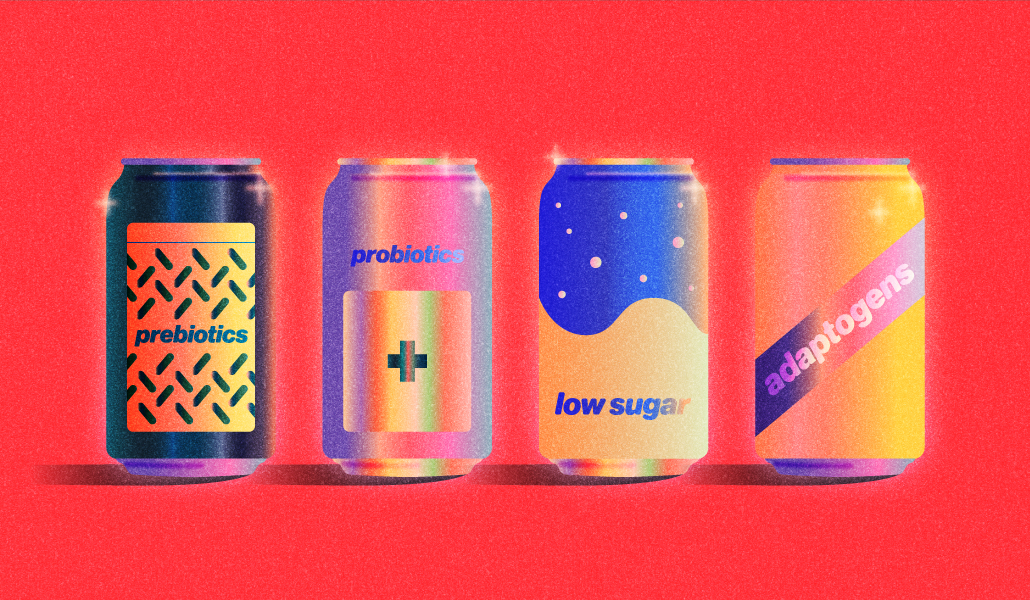CPG brands are ramping up product development in 2024

After tahini brand Soom Foods landed at Whole Foods in 2021, founder Amy Zitelman was ready to get back to creating new products with the aim of landing on more shelves. But between launching at its first conventional grocery chain, Publix, and sunsetting its DTC business, R&D took a back seat in the name of streamlining operations in 2023.
“It seemed like 2023 halted product development in its tracks,” Zitelman told Modern Retail, while CPG brands battled rising inflation, and companies of all sorts went through cost-cutting. While Soom did end up launching a new product at the end of 2023 — its tahini-based snack bites — the company experienced delays due to external factors. For example, in the fall Soom initially tried to coordinate the rollout of the snack bites with a retail partner before deciding on launching the bites on Amazon.
Soom plans to continue adding more flavors to the new bites line, but it’s not the only brand trying to resume a more consistent cadence of product development. The past several years have been challenging for food and beverage startups — in 2020 and 2021, brands scrambled to meet heightened DTC demand. Then, over the following years, they had to focus on making sure they had enough product to meet demand for new retail partners.
As a result, at some companies, new product development was put on the back burner. Now, as the business environment seems to be stabilizing, some are turning their attention back to R&D to fuel much-needed growth.
Product development can ebb and flow depending on the phase a business is in.
For instance, for the first two years of its operations, ready-to-eat meal brand Proper Good was selling purely direct-to-consumer. The company was putting out an average of one new flavor per month that catered to dietary preferences, like gluten-free, dairy-free and keto. Then, at the end of 2022, the brand launched in Walmart. Much of its effort went into getting its best-selling SKUs into 2,000 locations, including soups like tomato and basil and creamy chicken. “Obviously that took a lot of bandwidth in terms of time and capital,” Proper Good co-founder Christopher Jane said.
Following the launch, the company scaled back on rolling out new recipes by about 50% throughout last year. Now that the Walmart presence has been established, Jane said Proper Good is dropping new products on its DTC website on a more regular basis.
Ad position: web_incontent_pos1
At the end of December, Proper Good launched its latest product, a highly-requested French onion soup.
Jane said another new product will debut in about three weeks, as the company refocuses on owned channel growth, “because we must nurture the DTC customer.” Jane said new products are a major marketing lever that help drive new subscriptions — which is how Proper Good has maintained its direct-to-consumer growth despite ongoing challenges.
“When a new product launches, the website has by far the best traffic, conversion and ROAS day that month,” Jane said.
Cocktail syrups maker Liquid Alchemist is also ramping new product launches back up, after taking a pause to focus on retail expansion. When the pandemic began in 2020, Liquid Alchemist had just launched new flavors such as peach syrup. But when at-home cocktail began to take off, the company — which also sells to bars and restaurants — focused on fulfilling unprecedented demand. The company continued to release new syrup flavors, most recently launching a mango syrup last summer, after spending some time plotting out a bigger retail presence — targeting national chains like Total Wines. According to the company, its products are currently in about 2,000 retail locations, and that figure is set to hit 5,000 by the end of year with the entrance of new retailers like Whole Foods and Wegmans.
As Liquid Alchemist enters thousands of new doors, founder Randy Tarlow said that in 2024, the company is also readying to launch falernum, a syrup used in tropical drinks that features notes of ginger, lime, almond and cloves. The development for the new SKU is based on market trends Tarlow has observed in recent years, like the the resurgence of tiki bars and tropical drinks. “There has been a consistent demand for falernum, which is following the launch of our orgeat,” Tarlow said.
Ad position: web_incontent_pos2
In the past year, navigating the tricky retail environment has made digitally-native brands cautious of taking on too much at once. Soom’s Zitelman said projects like R&D are impacted when brands are operating on new grounds. Launching in new retail stores requires investments in things like growing physical distribution, as well as any retail media spend the retailer requires.
As a result, brands are constantly having to juggle what to prioritize at any given time — new product development, or new retail launches.
“All of these factors are definitely influencing our product development strategy going forward,” Zitelman said.

